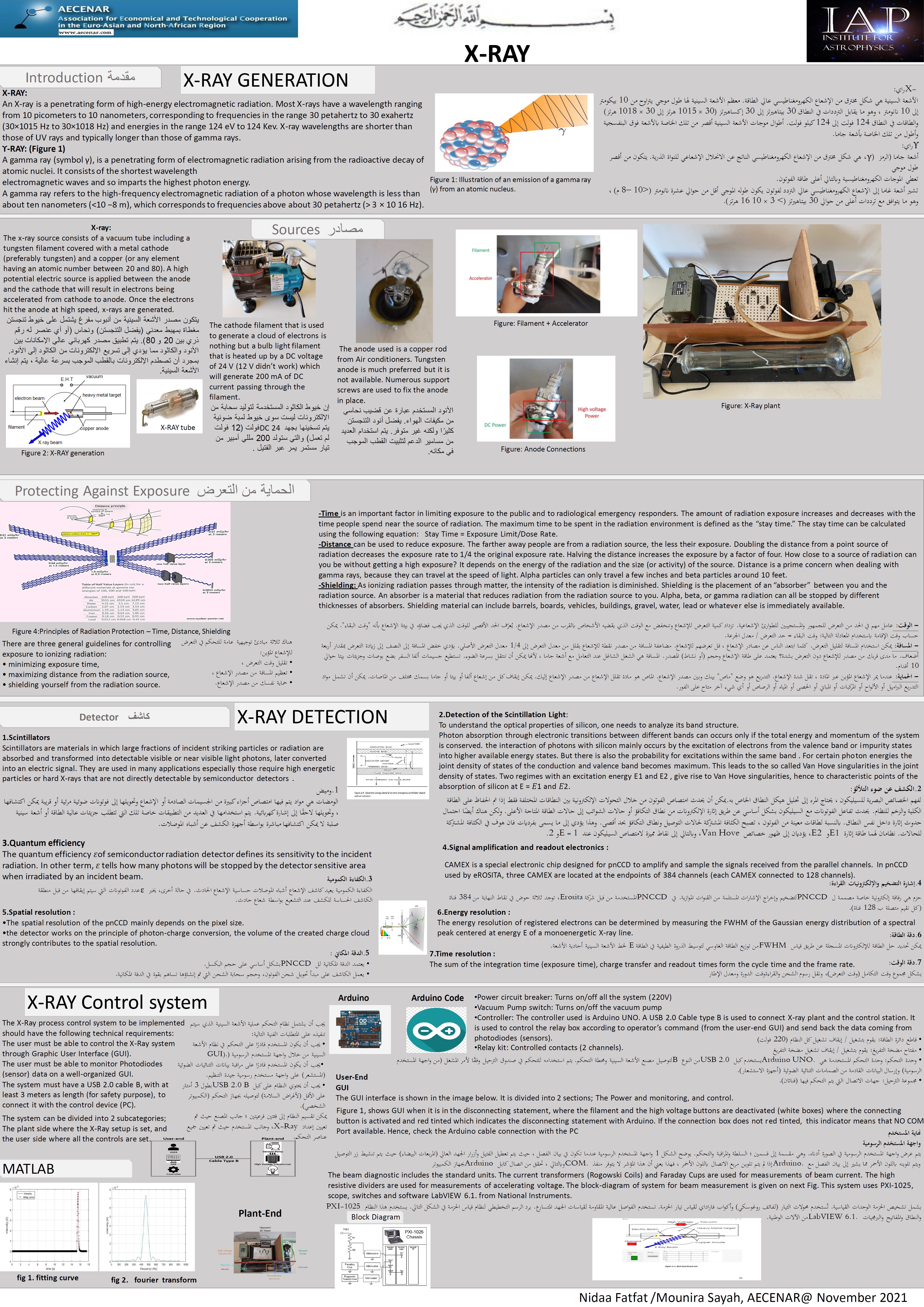- Hits: 4000
IAP-XRAMS (X-Ray Astronomy Measurement System)
X Ray and Gamma Ray Shielding (pdf)
Master Thesis Task "X Ray detector development for IAP-SAT"
X-Ray Detector - Presentation Master Thesis of Yahya Abbouchi (pptx), Dec 2021
X-Ray testrig control system (docx)

From https://en.wikipedia.org/wiki/X-ray_astronomy:
X-ray astronomy is an observational branch of astronomy which deals with the study of X-ray observation and detection from astronomical objects. X-radiation is absorbed by the Earth's atmosphere, so instruments to detect X-rays must be taken to high altitude by balloons, sounding rockets, and satellites. X-ray astronomy is the space science related to a type of space telescope that can see farther than standard light-absorption telescopes, such as the Mauna Kea Observatories, via x-ray radiation.
X-ray emission is expected from astronomical objects that contain extremely hot gases at temperatures from about a million kelvin (K) to hundreds of millions of kelvin (MK). Moreover, the maintenance of the E-layer of ionized gas high in the Earth's Thermosphere also suggested a strong extraterrestrial source of X-rays. Although theory predicted that the Sun and the stars would be prominent X-ray sources, there was no way to verify this because Earth's atmosphere blocks most extraterrestrial X-rays. It was not until ways of sending instrument packages to high altitude were developed that these X-ray sources could be studied.
The existence of solar X-rays was confirmed early in the rocket age by V-2s converted to sounding rocket purpose, and the detection of extraterrestrial X-rays has been the primary or secondary mission of multiple satellites since 1958.[1] The first cosmic (beyond the solar system) X-ray source was discovered by a sounding rocket in 1962. Called Scorpius X-1 (Sco X-1) (the first X-ray source found in the constellation Scorpius), the X-ray emission of Scorpius X-1 is 10,000 times greater than its visual emission, whereas that of the Sun is about a million times less. In addition, the energy output in X-rays is 100,000 times greater than the total emission of the Sun in all wavelengths.
Many thousands of X-ray sources have since been discovered. In addition, the space between galaxies in galaxy clusters is filled with a very hot, but very dilute gas at a temperature between 10 and 100 megakelvins (MK). The total amount of hot gas is five to ten times the total mass in the visible galaxies.
Related Sites/Items
|
System Specification |
|
|
Mechanical Design |
|
|
Process Control System Spec./Design |
|
|
Mechanical Realization |
|
|
Process Control System Realization (PLC+GUI) |
|
|
System Test Specification |
|
|
System Testing |
